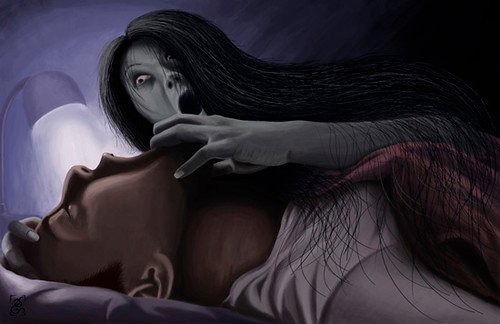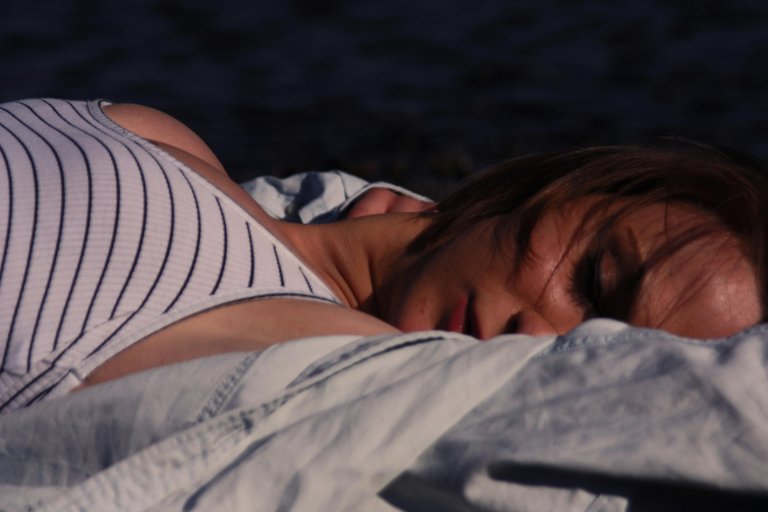What You Should Do When You Experience Sleep Paralysis
We all need to sleep and the inability to sleep has even been categorized as a disorder. Either you are a night crawler or an early riser, we all still need to find that time to put our eyes on pause and just sleep for a while so we can visit dreamland a little but you see, people suffering from sleep paralysis can have a different experience.
A lot of people define sleep paralysis in different ways especially from their experiences with some people saying they see black alien creature not taller than them but scary black, some would say they see an animal shadow usually a cat sized shadow creature on their bed just above them, or a shadow walking around the room but disappears through the door. These said, what truly is sleep paralysis?

This paralysis is said to be experienced by more than 50% of the world's population at least once in a lifetime and it is a parasomnia which is an abnormal experience that happens when we are falling asleep, during sleep cycle, or when we are about to wake up. This parasomnia happens when our consciousness wakes but the mind is still in sleep mode.
At this point, consciousness is awake but the brain hasn't told the body what's happening and even when a person can see or think, they still dream in the form of hallucination because the brain still believes the body is body. When we sleep, we switch between REM sleep (Rapir Eye Movement), and NREM sleep (Non-Rapid Eye Movement). You dream during REM sleep and in a state of wakefulness during NREM sleep. So sleep paralysis occur when a person becomes cognizant of going in or out of REM sleep and since REM sleep is the dream time, your brain can come up with some imagery that can be scary to you.
The Sleep paralysis that occur when you are drifting into sleep is known as hypnagogic or predormital sleep paralysis, while sleep paralysis that takes place while a person is coming into wakefulness is known as hypnopompic or postdormital sleep paralysis. According to Patricia L. Brooks and John H. Peever from the the University of Toronto, Canada, sleep paralysis is all in the brain and can be caused by 2 neurotrasmitters which are Gamma-Aminobutyric Acid (GABA) and Glycine.

The researchers found that if they blocked these neurotransmitters in the brains of rats, they exhibit more muscle activity than the rats in the control group that didn't have the neurotransmitters blocked. When Sleep paralysis occur blocking REM and NREM, it causes the brain to block GABA and GLycine as it begins to reach a state of wakefulness. Since GABA and Glycine restict movement but not the base function, the diaphragm continues to function without the chest moving.
Why we dream is still be studied but according to John Alan Hobson and Robert McCarley, it is as a result of lower functions of the brain during REM sleep like heart and blood pressure translating to visual and auditory hallucinations. According to J Allen Cheyne et al. in the article titled "Hypnagogic and Hypnopompic Hallucination during Sleep Paralysis: Neurological and Cultural Construction of the Night-mare" argue that sleep paralysis are of three types, Incubus, intruder and Unusual Body experience. With intruder being the sleep paralysis that is associated with a presence, incubus, by difficulty in breathing and pressure on the chest while for unusual body experience, it is associated with floating, or bliss.
With all these said, when next you are seeing something trying to press your chest as a result of sleep paralysis, just relax your mind because it cannot cause any harm and unless a person suffers from a case of parasomnia or narcolepsy, sleep paralysis isn't something that will happen at all time.
Post Reference
https://www.ncbi.nlm.nih.gov/pmc/articles/PMC4958367/
https://www.sleepmedres.org/journal/view.php?number=126
https://sleepeducation.org/sleep-disorders/sleep-paralysis/
https://www.medicalnewstoday.com/articles/295039#causes
https://mymodernmet.com/nicolas-bruno-sleep-paralysis-photography-interview/
https://www.ncbi.nlm.nih.gov/pmc/articles/PMC3624974/
https://www.sciencedirect.com/science/article/pii/0013469449902199?via%3Dihub
https://www.sciencedaily.com/releases/2012/07/120711131030.htm
https://www.ncbi.nlm.nih.gov/pmc/articles/PMC4958367/
https://www.ncbi.nlm.nih.gov/pmc/articles/PMC3156892/
https://www.ncbi.nlm.nih.gov/pmc/articles/PMC3624974/
https://www.ncbi.nlm.nih.gov/pmc/articles/PMC4958367/
Image Reference
Image 1 || Flickr || sleep-paralysis-pic
Image 2 || Pexels || Woman Sleeping
So, at what point do we start accusing the old woman next door?
Thanks for your contribution to the STEMsocial community. Feel free to join us on discord to get to know the rest of us!
Please consider delegating to the @stemsocial account (85% of the curation rewards are returned).
Thanks for including @stemsocial as a beneficiary, which gives you stronger support.